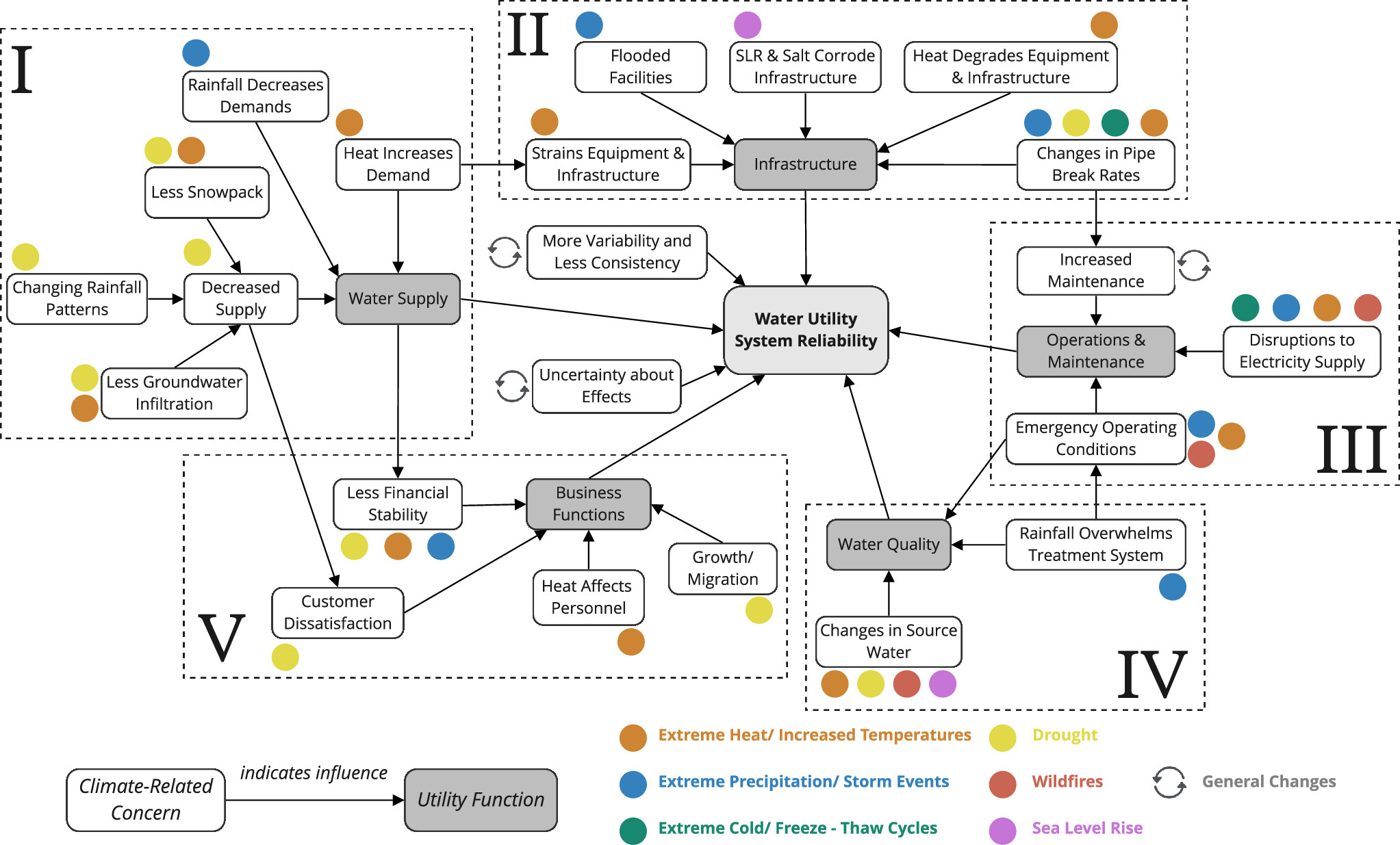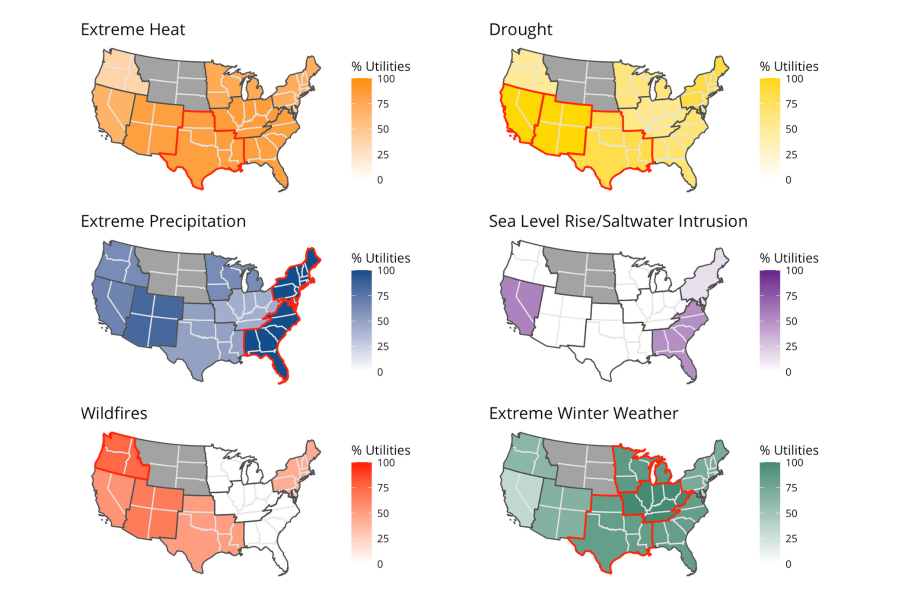
Understanding Climate Change Risks to Water System Reliability
 Are drinking water managers across the country worried about the effects of climate change on their infrastructure systems? And are they prepared to deal with climate change-based challenges to their utility operations?
Are drinking water managers across the country worried about the effects of climate change on their infrastructure systems? And are they prepared to deal with climate change-based challenges to their utility operations?
To assess preparedness as temperatures rise and storms strengthen, PhD candidate Zia Lyle interviewed individuals at 60 utilities across the country. Her research, recently published as Drinking Water Utility-Level Understanding of Climate Change Effects to System Reliability, identifies the climate hazards most concerning to drinking water managers. It also assesses utility-level understanding of climate change risks and evaluates the status of current water utility adaptation planning.
“Climate change hazards, including increased temperatures, drought, sea level rise, extreme precipitation, wildfires, and changes in freeze-thaw cycles, are expected to degrade drinking water utility system infrastructure and decrease the reliability of water provision,” Lyle says. By speaking to drinking water managers across the U.S., she could gauge how opinions on the effects of climate change differed by location.
Lyle was surprised that some managers were not concerned about the effects of climate change on their area’s drinking water system—a belief shared mostly by managers in areas with an abundance of water “[I found] that concern and awareness of climate hazard risks vary geographically and are grounded in historical exposure. Some participants don’t think climate change will influence their system’s overall reliability.”
“Public drinking water systems need to maintain a balance between keeping clean water affordable and making the necessary investments in their systems to prepare for the future.”
Lyle chose this research because she’s interested in how people interact with engineered infrastructure systems—especially because climate change may push these systems beyond their limits.
“There’s professional, academic, and federal guidance about how a drinking water utility might increase the resiliency of its system against climate change hazards, but very little work has been done to explore whether and how utilities are actually using this guidance.” By talking directly to managers, she quickly discovered gaps between recommended actions and what’s actually happening at utilities.
Lyle says that her CEE coursework prepared her for the challenges of this research—especially her courses on climate adaptation and behavioral decision science. “Both of my advisors [Costa Samaras and Jeanne VanBriesen] have extensive policy experience and they encouraged me to think about the bigger picture applications of all the research I did, which helped me to settle on this paper topic and communicate policy recommendations within the paper.”
Discovering the lack of continuity amongst managers in following federal guidance was just the first step. Lyle then sought to better understand how utility managers approach their decision-making—with an end goal to inform policymakers of how to best communicate climate-related strategies within the drinking water sector.
“Utility managers are predominantly concerned with drought and water supply changes as a result of climate change and less aware of effects on operations, maintenance, and finances,” she adds. Those same managers are often not actively integrating climate projections into planning efforts. “Only a few of the interviewed utilities have comprehensive, multi-hazard climate adaptation plans, indicating more education and resources are needed to fully prepare these drinking water systems for future climate hazards.”
She says that while the managers she spoke with generally recognize current hazards and reference historical events in decision-making, they may lack awareness that climate change can make existing hazards worse and introduce new hazards. These challenges include extreme precipitation and heat waves.
Lyle hopes that her research will help drinking water managers to plan for issues that might not be on their radar today—but she acknowledges that one barrier to doing this is cost. “Public drinking water systems need to maintain a balance between keeping clean water affordable and making the necessary investments in their systems to prepare for the future.”
She also asserts that leadership is needed to keep managers apprised of climate change-related issues and associated risks. “Most surveyed utilities do not have comprehensive climate adaptation plans, despite federal and professional recommendations. [This] indicates that utilities need directed guidance, and policymakers should consider including climate hazards and projections as part of required utility risk and resilience assessments.”

Frequency of identified natural hazard risks to system reliability. Distribution of hazard risks identified by participants in the Continental US, with darker shading indicating a higher percentage of utilities within each region mentioning the risk.
Red outlines indicate a region where the specific hazard was identified by the most participants as a risk (i.e., “top” risk in each region). Drought, extreme heat, and extreme cold were equally frequently mentioned by participants from the South region. Northern Rockies and Plains region is not included due to limited sample size. Extreme precipitation includes hurricane and tropical storm or flooding events. Extreme winter weather includes extreme cold events or ice storms/blizzards.